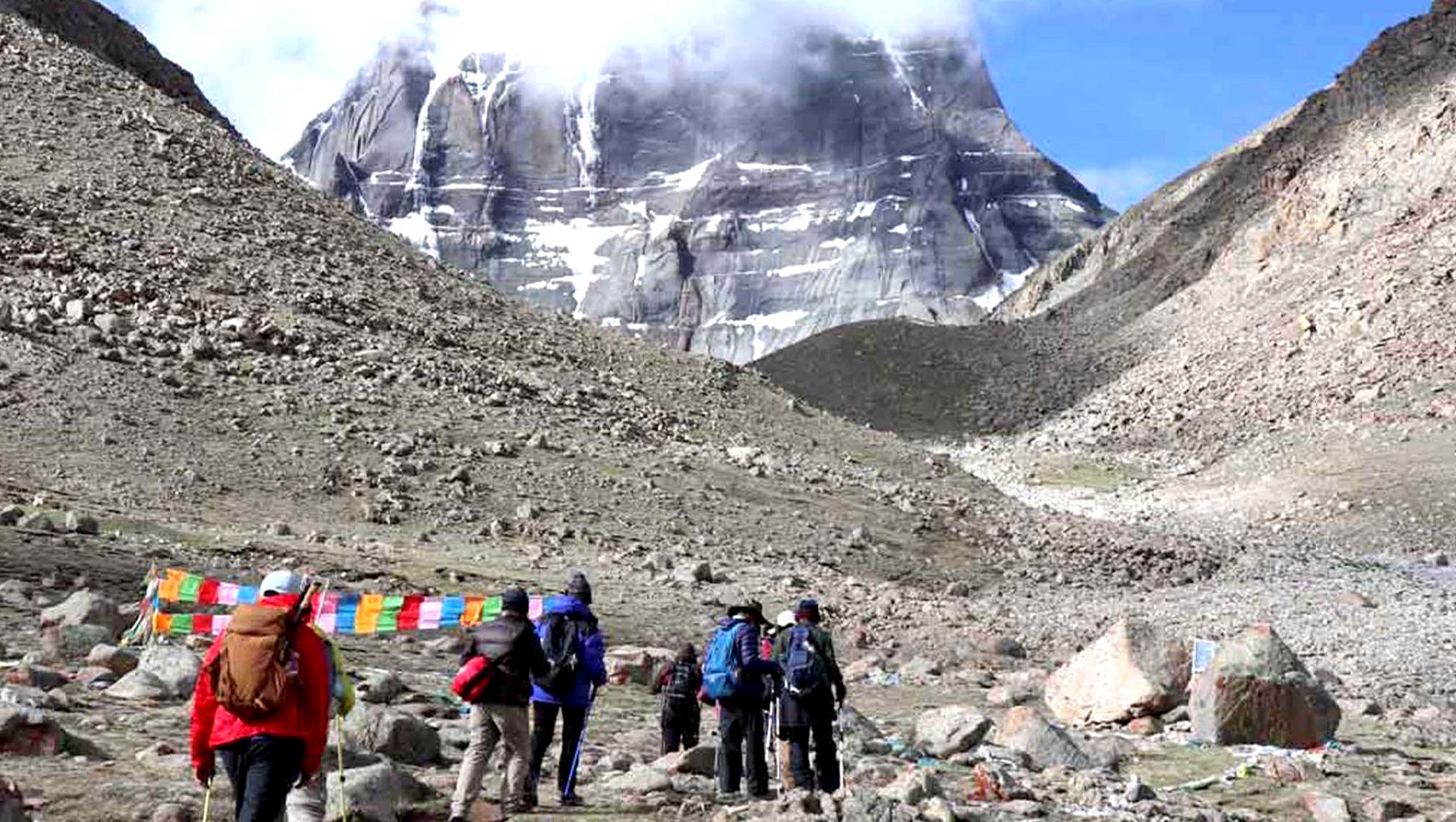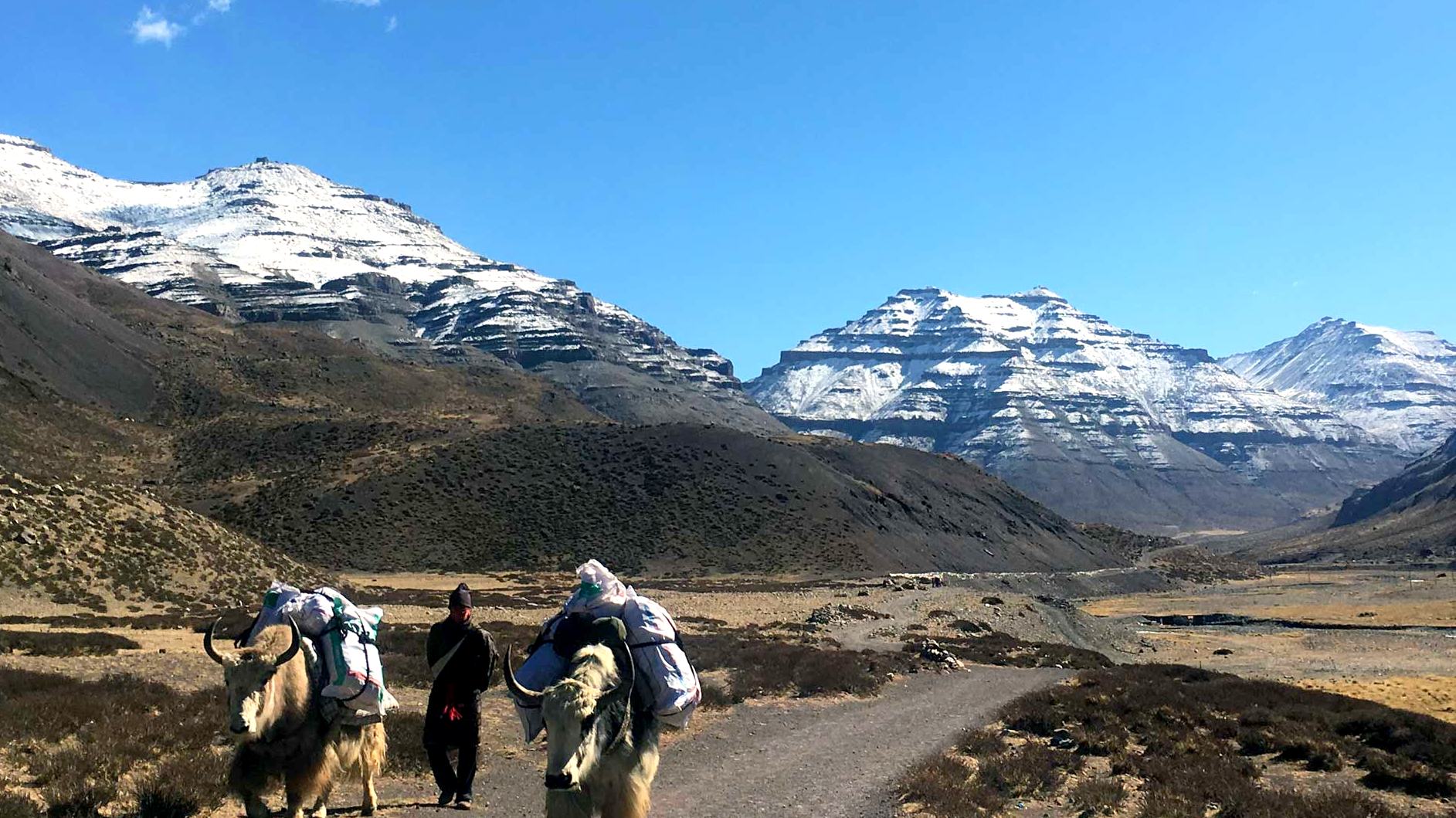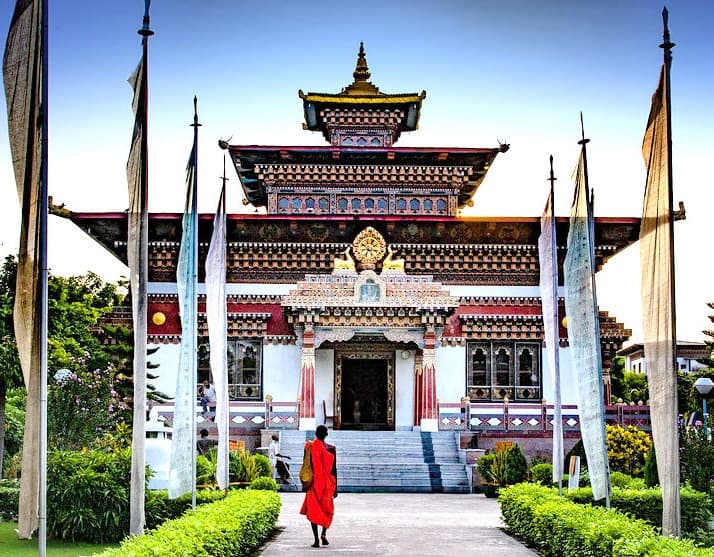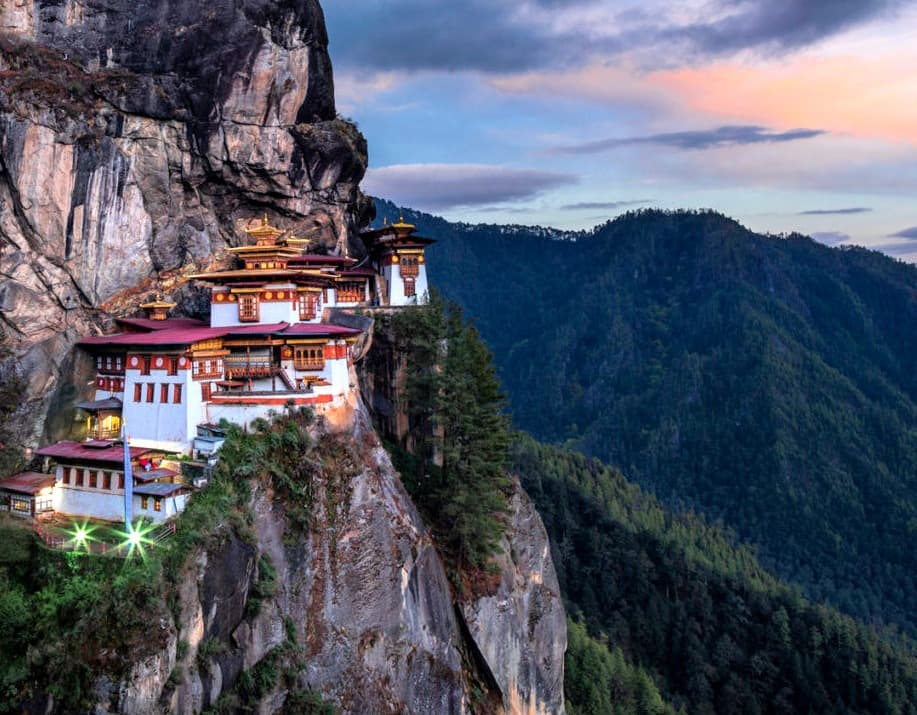Exploring the Tibetan Highlands through trekking presents an opportunity to immerse oneself in some of the world's most majestic high-altitude environments, spiritual sites, and unique cultural settings. This guide aims to equip adventurers with crucial information on popular trekking routes such as the revered Mount Kailash Pilgrimage and the scenic Ganden to Samye trail, alongside practical tips on acclimatization, securing the necessary permits, and respecting local customs. With the right preparation and insights, trekkers can ensure a fulfilling journey across Tibet's breathtaking landscapes, deepening their understanding of its rich heritage and natural beauty.
At Druk Holidays, we offer unparalleled experiences for Trekking in the Tibetan Highlands, providing essential routes, tips, and preparation guidance to ensure your adventure is both memorable and safe. Our expertise in organizing treks across this breathtaking region ensures travelers have access to the most scenic trails, practical advice, and thorough support for a seamless journey. Whether you're exploring the sacred paths of Mount Kailash or the rugged trails to Everest Base Camp North Face, Druk Holidays is your trusted partner for an unforgettable exploration of Tibet's majestic landscapes.
Mount Kailash Pilgrimage Trek
The Mount Kailash Pilgrimage Trek is an extraordinary journey that draws thousands of pilgrims and adventurers alike to one of the most sacred and awe-inspiring places in Asia. Mount Kailash, standing at an elevation of 6,638 meters (21,778 feet), is considered sacred in Hinduism, Buddhism, Jainism, and Bon, making it a pivotal pilgrimage site for followers of these religions. The trek involves circumambulating the base of Mount Kailash, a ritual known as a Kora, which is believed to bring spiritual benefits and purify the soul.

Highlights of the Mount Kailash Pilgrimage Trek:
-
Spiritual Significance: For Hindus, Mount Kailash is the abode of Lord Shiva; for Buddhists, it is associated with Demchok, who represents supreme bliss. Jains believe it to be the site where the first Jain Tirthankara attained Nirvana, while in Bon, it is the seat of all spiritual power.
-
The Kora: The trek itself is approximately 52 kilometers (32 miles) long, usually completed over three days. Pilgrims believe that performing a Kora cleanses sins and can bring enlightenment. Some devout pilgrims undertake this journey by prostrating the entire way, making the journey last weeks.
-
Diverse Landscapes: The route offers dramatic views of the Himalayas, sprawling Tibetan plateaus, and serene lakes, including the sacred Lake Mansarovar, another important pilgrimage site. The rugged terrain, high altitudes, and remote paths provide a challenging yet rewarding experience.
-
Cultural Immersion: Along the way, trekkers can witness the rich cultural traditions of Tibetan Buddhism, interact with pilgrims from various faiths, and visit ancient monasteries and remote hermitages, offering a glimpse into the spiritual practices that have been preserved for centuries.
Preparation and Tips:
-
Permits and Documentation: Travelers need several permits to trek in this region, including a Tibet Travel Permit, Alien's Travel Permit, and Military Permit. It's essential to arrange these well in advance, usually through a travel agency.
-
Physical Fitness: The trek is physically demanding due to its high altitude and length. Adequate physical preparation, including cardiovascular and altitude training, is recommended.
-
Acclimatization: Spend a few days acclimatizing to the high altitude in Tibet before starting the trek to minimize the risk of altitude sickness.
-
Season: The best times to undertake the Kailash Pilgrimage Trek are during the late spring (May to June) and early autumn (September to October) when the weather is more favorable, and the paths are accessible.
-
Guides and Porters: Hiring a local guide and possibly porters can enhance your trekking experience, providing insights into the cultural significance of the sites visited and ensuring safety along the route.
-
Respect Local Customs: This is a highly sacred trek for many people. Showing respect for the pilgrims and adhering to local customs and traditions is crucial.
The Mount Kailash Pilgrimage Trek is more than just a physical journey; it's a profound spiritual adventure that offers a unique blend of natural beauty, cultural depth, and personal introspection. Whether you are seeking spiritual enlightenment, an in-depth cultural experience, or the thrill of an adventurous trek, the journey around Mount Kailash is sure to be an unforgettable experience.
Ganden to Samye Trek
The Ganden to Samye Trek is a remarkable journey that connects two of Tibet's most important and historic Buddhist monasteries: Ganden Monastery and Samye Monastery. This trek is not just a physical challenge but also a spiritual voyage that offers insights into Tibetan Buddhism and its rich cultural heritage. Spanning approximately 80 kilometers (50 miles), this trek typically takes about 4 to 5 days to complete, crossing several high passes and offering stunning views of the Tibetan landscape.
Highlights of the Ganden to Samye Trek:
-
Ganden Monastery: The trek begins at Ganden Monastery, one of the "great three" Gelug University monasteries of Tibet, founded by Je Tsongkhapa in 1409. It's perched high on the Wangbur Mountain at 4,300 meters (14,107 feet), offering panoramic views of the surrounding valleys.
-
Rugged Terrain and Breathtaking Views: The route traverses through a variety of terrains, from alpine meadows and lakes to stark, barren landscapes and rocky passes. Trekkers are rewarded with spectacular views of the Tibetan plateau, including the Yarlung Tsangpo River and surrounding peaks.
-
High Mountain Passes: The trek involves crossing several high passes, including the Chitu La Pass (5,010 meters or 16,437 feet) and the Shug La Pass (5,250 meters or 17,220 feet), challenging trekkers with steep ascents and descents.
-
Samye Monastery: The trek culminates at Samye Monastery, Tibet's first Buddhist monastery, founded in the 8th century. The monastery is renowned for its unique design, which is said to represent the Buddhist universe, and it holds great historical and spiritual significance.
Preparation and Tips:
-
Physical Fitness: Due to the challenging nature of the trek, with high altitudes and steep sections, trekkers should be in good physical condition and have some prior trekking experience.
-
Acclimatization: Spend a few days in Lhasa or at a similar altitude to acclimatize to the high elevation before starting the trek to reduce the risk of altitude sickness.
-
Guides and Porters: Hiring a local guide is highly recommended for navigating the route, understanding the cultural significance of the sites, and arranging camping sites. Porters can also help with carrying supplies.
-
Permits: As with any travel in Tibet, ensure you have all necessary permits arranged through a travel agency well in advance of your trip.
-
Best Time to Trek: The ideal months for the Ganden to Samye Trek are from May to June and September to October, when the weather is more stable, and the views are clear.
-
Packing Essentials: Prepare for a range of weather conditions by packing layers, including windproof and waterproof gear. Also, bring a good-quality tent, sleeping bag, and a portable stove if you plan to camp.
-
Cultural Respect: This trek is a journey through areas of significant religious importance. Showing respect for local customs, traditions, and religious sites is essential.
The Ganden to Samye Trek offers an incredible opportunity to immerse yourself in the beauty and spirituality of the Tibetan landscape and Buddhism. It's a journey that challenges the body, enriches the mind, and nourishes the soul, making it a must-do for trekkers seeking a deeper connection with Tibetan culture and history.
Tsurphu to Yangpachen Trek
The Tsurphu to Yangpachen Trek is a unique journey that offers an immersive experience into the heart of Tibetan culture, spirituality, and breathtaking landscapes. This trek connects Tsurphu Monastery, an important center for Tibetan Buddhism's Kagyu school, with Yangpachen Monastery, known for its hot springs and scenic beauty. Spanning approximately 55 kilometers (34 miles), the trek typically takes about 4 days to complete and is less traveled compared to other routes in Tibet, providing a more secluded and intimate experience with nature and local nomadic life.

Highlights of the Tsurphu to Yangpachen Trek:
-
Tsurphu Monastery: The trek starts at Tsurphu Monastery, which serves as the traditional seat of the Karmapa, the heads of the Karma Kagyu lineage. The monastery is a spiritual and architectural marvel, offering insights into Tibetan Buddhism's rich rituals and practices.
-
Varied Landscapes: The trek takes you through a diverse array of landscapes, including wide alpine valleys, high mountain passes, and lush meadows. The trail offers stunning views of the surrounding peaks and a chance to witness the vibrant flora and fauna of the region.
-
Nomadic Encounters: One of the trek's unique aspects is the opportunity to interact with Tibetan nomads, offering a glimpse into their traditional way of life. Trekkers can observe their daily activities, such as herding yaks and sheep, and experience their warm hospitality.
-
Hot Springs at Yangpachen: The trek concludes at Yangpachen, famous for its geothermal hot springs. These natural spas are a perfect way to relax and rejuvenate after the trek, surrounded by the tranquil beauty of the Tibetan plateau.
Preparation and Tips:
-
Physical Fitness: Although not as strenuous as some other treks in Tibet, the Tsurphu to Yangpachen Trek still requires good physical condition due to its high altitude and the distance covered.
-
Acclimatization: It's crucial to spend a few days acclimatizing to the high altitude in Lhasa or a similar environment before embarking on the trek to minimize the risk of altitude sickness.
-
Guides and Support: Hiring a local guide is recommended for their invaluable knowledge of the terrain, culture, and navigation along the route. Porters or yaks can also be arranged to carry supplies.
-
Permits and Documentation: Ensure all necessary travel permits for Tibet are in order, which can typically be arranged through a tour operator.
-
Best Time to Trek: The best periods for this trek are from May to June and September to October when the weather is milder, and the paths are clearer.
-
Packing Essentials: Prepare for variable weather by packing appropriate clothing, including layers for cold temperatures. Also, bring a quality tent, sleeping bag, and a portable stove for camping along the route.
-
Respectful Interaction: When engaging with local nomads and visiting monasteries, show respect and courtesy. Always ask permission before taking photographs of people or religious sites.
The Tsurphu to Yangpachen Trek is an enriching journey that not only challenges trekkers physically but also offers profound cultural and spiritual experiences. This trek is ideal for those looking to explore the less-trodden paths of Tibet and delve deeper into the essence of Tibetan nomadic life and Buddhism.
Everest Base Camp North Face
The Everest Base Camp Trek on the North Face in Tibet presents a unique and less-traveled route to the base of the world's highest peak. This adventure diverges significantly from its Nepalese counterpart by offering trekkers a chance to explore the rugged beauty and remote expanses of the Tibetan plateau. The journey to the North Face base camp not only tests one's physical and mental endurance but also immerses them in the rich cultural tapestry of Tibetan Buddhism and the stark, breathtaking landscapes that define the region.

Highlights of the Everest Base Camp Trek on the North Face
-
Stunning Views of Everest's North Face: The trek offers unparalleled views of Mount Everest's imposing North Face, providing a unique vantage point that is less commonly experienced by trekkers. The sheer scale and majesty of the peak from this perspective are truly awe-inspiring.
-
Rongbuk Monastery: This ancient monastery, situated near the base camp, is one of the highest monasteries in the world. Visiting Rongbuk offers a unique opportunity to explore Tibetan Buddhist culture and enjoy breathtaking views of Everest.
-
Remote Tibetan Plateau: Trekking across the Tibetan Plateau, you'll experience the vastness and isolation characteristic of this high-altitude desert landscape. The plateau's unique geography and ecosystems make it a fascinating area for exploration.
-
Cultural Immersion: The route provides ample opportunities for engaging with Tibetan culture, from visiting remote monasteries and villages to interacting with local nomads. This cultural immersion is a significant part of the trek's appeal.
-
Solitary Trekking Experience: Unlike the busier Nepalese side, the North Face route offers a more solitary trekking experience. This allows for personal reflection and a deeper connection with the natural environment.
Preparation Tips for the Trek
-
Acclimatize Properly: Start by spending several days at a high altitude, such as in Lhasa or Shigatse, to help your body adjust to the reduced oxygen levels. Proper acclimatization is crucial to avoid altitude sickness, which can be a serious risk on the trek.
-
Secure Necessary Permits: Tibet's travel restrictions require all foreign visitors to obtain several permits, including a Tibet Travel Permit. These must be arranged well in advance through a travel agency, as independent travel is not permitted.
-
Hire a Local Guide: Employing a local guide is not only mandatory but also invaluable for their knowledge of the terrain, weather, and local customs. Guides can greatly enhance your understanding and enjoyment of the trek.
-
Pack Appropriately: The weather can be extremely cold and changeable, so pack layers of thermal clothing, a high-quality sleeping bag rated for low temperatures, and a durable four-season tent for nights spent at high altitudes.
-
Physical Preparation: The trek is physically demanding, with long days of walking at high elevations. Prioritize cardiovascular fitness, strength training, and altitude acclimatization in your preparation.
-
Travel Insurance: Make sure your insurance policy covers high-altitude trekking and emergency medical evacuation. This is essential for dealing with any potential health issues or accidents during the trek.
-
Best Time to Trek: The optimal times for this trek are from April to early June and September to October. During these periods, the weather is generally clearer and more stable, offering safer conditions and better views.
-
Health and Safety: Carry a comprehensive first-aid kit, including medication for altitude sickness. Stay hydrated and use water purification methods to avoid waterborne illnesses. Always listen to your body and your guide's advice regarding health and safety on the trek.
How to Choose a Trekking Route during the Trekking in Tibet
Choosing the right trekking route in Tibet is crucial to ensuring your adventure is both enjoyable and suited to your fitness level, interests, and the time you have available. Tibet's vast and varied landscape offers a range of trekking experiences, from sacred pilgrimages to challenging high-altitude hikes. Here are key considerations to help you select the perfect trekking route in Tibet:
Assess Your Physical Fitness and Experience
- Evaluate your physical condition and trekking experience honestly. High-altitude treks require good physical fitness, as thin air can make breathing harder and physical exertion more challenging.
- Beginners should opt for shorter, less strenuous treks that offer time for acclimatization, such as the Tsurphu to Yangpachen trek.
- Experienced trekkers might prefer the challenge of more demanding routes like the Everest Base Camp North Face trek or the Ganden to Samye trek.
Consider Altitude and Acclimatization
- Altitude sickness is a concern in Tibet due to its high elevation. Choose a route that allows for gradual acclimatization, with rest days planned at key points to adjust to the altitude.
- Routes like the Mount Kailash Pilgrimage Trek involve significant elevation changes, requiring careful acclimatization to prevent altitude sickness.
Research the Cultural and Scenic Highlights
- Decide what you want to see and experience. Tibet offers a rich tapestry of cultural and natural beauty, from ancient monasteries and sacred mountains to stunning high-altitude lakes and landscapes.
- If you're interested in Tibetan Buddhism and culture, a trek that connects monasteries, such as Ganden to Samye, might be ideal.
- For those drawn to natural wonders, routes that offer views of Mount Everest or the sacred Mount Kailash provide unforgettable experiences.
Understand the Best Time to Trek
- The trekking season in Tibet is primarily from May to October, with variations depending on the specific region. Consider the climate and weather conditions of the route during your planned trekking period.
- Spring (April to June) and autumn (September to October) are generally the best times for clear skies and moderate weather, but some routes may be more accessible or scenic in different seasons.
Know the Logistics and Permits Required
- Some treks require special permits and arrangements, such as the Mount Kailash Pilgrimage Trek and the Everest Base Camp North Face trek. Make sure you understand the logistics involved and arrange these well in advance.
- Consider whether you'll need a guide, porter, or yak support for your trek, which can be crucial for navigating remote areas and carrying supplies.
Read Reviews and Seek Advice
- Look for reviews and trip reports from other trekkers who have completed the routes you're considering. Their insights can provide valuable information on the challenges and highlights of each trek.
- Consulting with trekking agencies or local guides can also offer personalized advice based on your interests and capabilities.
Choosing the right trekking route in Tibet involves a careful balance of personal fitness, interests, logistical considerations, and an understanding of the region's unique challenges and attractions. With thoughtful preparation, you can select a route that offers the perfect blend of adventure, culture, and natural beauty for an unforgettable experience in the Tibetan highlands.
Accommodation and Food During the Trekking in Tibet
Accommodation and food during trekking in Tibet can vary significantly depending on the route you choose, ranging from basic tented camps to guesthouses and monasteries. Understanding what to expect and how to prepare can enhance your trekking experience, ensuring you stay nourished and rested throughout your journey.
Accommodation
- Tented Camps: On more remote treks, such as the Mount Kailash Pilgrimage or the advanced sections of the Everest Base Camp North Face trek, you may need to camp. High-quality, four-season tents are recommended due to the unpredictable weather and cold nights. Campsites typically offer basic facilities, and it's essential to bring a warm sleeping bag and an insulated mat.
- Guesthouses and Tea Houses: On some of the more popular trekking routes, you can find simple guesthouses or tea houses. These offer basic rooms, often with shared bathrooms. Facilities are modest, but staying in these establishments provides a warm place to sleep and the opportunity to interact with other trekkers and locals.
- Monasteries: In some cases, trekkers may have the opportunity to stay in monasteries, especially on routes like the Ganden to Samye trek. This unique experience allows for a deeper cultural immersion, though accommodations are very basic, and respectful behavior is required.
Food
- Local Cuisine: The diet in Tibet is heavily influenced by its altitude and climate, with a focus on barley, dairy, and meat. Tsampa (roasted barley flour), butter tea, and thukpa (noodle soup) are staples. While trekking, you'll likely encounter simple Tibetan meals, with limited vegetables due to the high altitude.
- Packed and Prepared Food: On remote treks, where guesthouses or eateries are scarce, you'll rely on food packed from larger towns or prepared by a cook if you're part of a guided tour. It's essential to bring high-energy, non-perishable food items like energy bars, nuts, and dried fruit to supplement meals.
- Dining in Guesthouses and Tea Houses: Where available, guesthouses and tea houses serve a variety of dishes, often including Chinese and Nepalese options alongside Tibetan staples. The menu tends to be more extensive in popular trekking areas, with options like rice, pasta, and even some Western dishes.
Tips for Accommodation and Food
- Book in Advance: For treks during the peak season, it's wise to book guesthouses in advance, if possible, especially in smaller villages with limited options.
- Carry a Water Purifier: Access to clean drinking water can be limited. Carry purification tablets or a portable water filter to ensure you have safe drinking water.
- Pack Snacks and Supplements: High-energy, lightweight snacks are crucial for maintaining energy levels during long trekking days.
- Be Flexible and Respectful: Accommodations and food in Tibet can be very different from what many trekkers are accustomed to. Maintaining flexibility and respect for local customs and limitations will greatly enhance your experience.
Accommodation and food during your trek in Tibet are part of the adventure, offering insights into the local way of life and an opportunity to connect with the landscape and people of this unique region. With proper preparation and an open mind, you can ensure that these aspects of your trek are both enjoyable and enriching.
Trekking in Tibet is a truly unique experience that combines challenging hikes with deep cultural immersion and stunning natural landscapes. From the sacred circuit around Mount Kailash to the historic route linking Ganden and Samye monasteries, each trek offers its own set of rewards and challenges. Proper preparation, including acclimatization, obtaining the necessary permits, and packing appropriately for the terrain and weather, is essential for a safe and enjoyable journey. Along the way, accommodations ranging from tented camps to guesthouses and the local cuisine provide a window into the daily lives of the Tibetan people. By approaching the adventure with respect for the local culture and environment, trekkers can ensure a fulfilling and respectful exploration of one of the world's most extraordinary trekking destinations.
FAQs of the Trekking in the Tibetan Highlands: Routes, Tips and Preparation
Q. What permits do I need for trekking in the Tibetan Highlands?
A. To trek in Tibet, you typically need a Tibet Travel Permit, an Alien's Travel Permit, and for certain areas close to the border or military installations, a Military Area Entry Permit. These must be arranged in advance through a travel agency, as independent travel in Tibet is not allowed.
Q. How do I acclimatize to high altitude?
A. Spend a few days at a moderately high altitude (around 2,500-3,000 meters) before starting your trek. Once on the trek, ascend slowly, limit physical exertion, and stay hydrated. It's also advisable to incorporate rest days into your itinerary for additional acclimatization.
Q. What is the best time of year to trek in the Tibetan Highlands?
A. The best months for trekking in Tibet are from May to October, with the optimal periods being late spring (May and June) and early autumn (September and October) when the weather is more stable, and the skies are clearer.
Q. Can I trek solo in the Tibetan Highlands?
A. Independent trekking is not permitted in Tibet. You will need to arrange your trek through a licensed tour operator, which will provide you with a guide, driver, and, if necessary, porters.
Q. What should I pack for a trek in Tibet?
A. Pack layers for variable weather, including a windproof jacket, thermal underwear, and warm layers. Also essential are a high-quality sleeping bag, a comfortable backpack, hiking boots, a sun hat, sunglasses, sunscreen, a water purification system, and personal medical supplies. Don't forget to bring enough high-energy snacks for the duration of your trek.
Q. How can I respect local customs while trekking?
A. Show respect at religious sites and monasteries by dressing modestly, removing your shoes where required, and asking permission before taking photos. Be mindful of local traditions and practices, and always follow your guide's advice on cultural matters.
Q. What are the risks of trekking in the Tibetan Highlands?
A. The primary risks include altitude sickness, sudden weather changes, and the physical challenges of trekking in a remote environment. Ensure you have a comprehensive travel insurance policy that covers high-altitude trekking and emergency evacuation.
Q. Are there any health precautions I should take?
A. Consult with a healthcare provider for a check-up before your trip and discuss vaccinations or medications you might need. It's also crucial to have a well-stocked first aid kit and know the symptoms of altitude sickness.
Q. How do I deal with altitude sickness?
A. Recognize the symptoms of altitude sickness, which can include headache, nausea, fatigue, and dizziness. If symptoms occur, stop ascending immediately and, if necessary, descend to a lower altitude. Severe cases may require evacuation and medical treatment.
Q. Can I hire equipment in Tibet, or should I bring my own?
A. While basic trekking gear can be rented in larger cities like Lhasa, it's recommended to bring your own equipment to ensure quality and fit, especially for critical items like hiking boots, sleeping bags, and backpacks.



